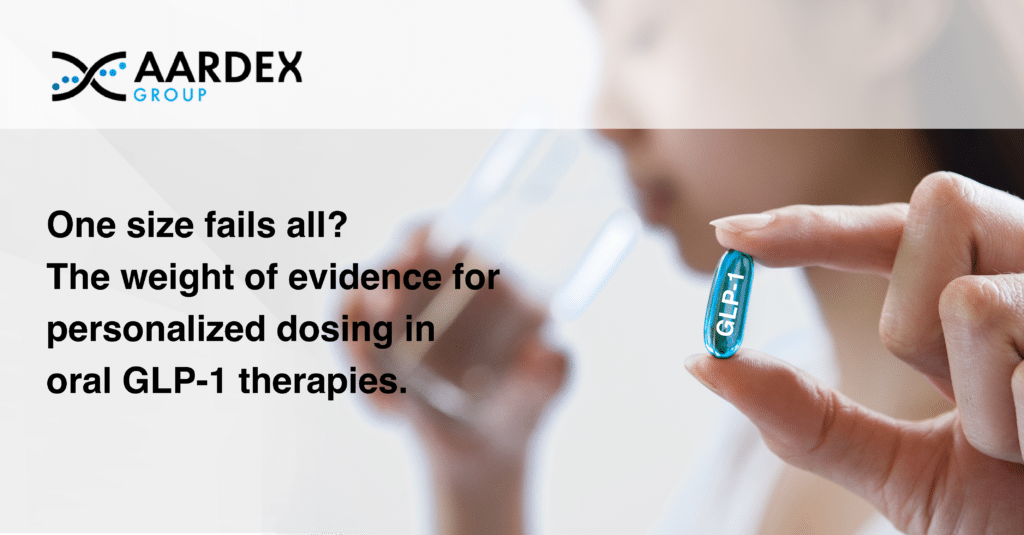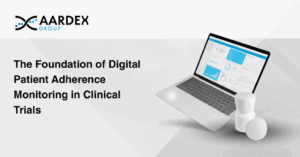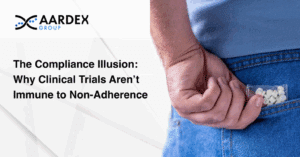The Rise of GLP-1 Therapies
In recent years, the pharmaceutical industry has borne witness to the meteoric rise of glucagon-like peptide-1 receptor agonist (GLP-1) therapies.
Having fast become established as a potentially life-changing treatment for Type 2 diabetes and obesity, emerging evidence of the cardio and neuroprotective effects of this category of medicines has only encouraged the application of a ‘wonder drug’ label and questions regarding the limits of its potential.[1],[2]
Oral Semaglutide: A Convenient Advancement
For adult Type 2 diabetes patients with a fear or dislike of injections, these benefits were given added lustre following the approval by regulators of semaglutide in a convenient once-a-day oral dose. While research into the subject continues, reviews have previously pointed to semaglutide in tablet form offering similar or better efficacy as well as similar tolerability to injectable versions.[3]
Challenges in Establishing Optimal GLP-1 Dosing Regimens
During the development phase, oral GLP-1 therapies can present particular challenges, however.
Determining the appropriate dose and dosing regimen, for example, requires pharmaceutical companies to navigate a finely balanced set of variables to ensure a drug delivers the optimal effect with minimal impact on the patient. This can be seen in the specifics of the dosing regimen for RYBELSUS® semaglutide tablets, which must be taken after waking, on an empty stomach, and with no more than four ounces (~120ml) of plain water.
Solving this dosing equation during development is critical to ensure efficacy is not limited during trials – an outcome that could jeopardise the chances of approval. Alternatively, if approval is granted on a higher-than-necessary level of dosage, it is possible that tablets may be prescribed or subsequently used at a lower dose level (post-marketing dose reduction) to manage any undesirable effects.
In the case of oral GLP-1 treatments, the factors known to complicate the process of establishing the optimal dosing regimen include:
- Bioavailability
Taken orally, GLP-1 receptor agonists are exposed to significant acid in the stomach, resulting in enzymatic degradation. This means that only a small fraction of the drug reaches the bloodstream, necessitating higher doses or special formulations in order to achieve the desired therapeutic effect. - Gastrointestinal side effects
Common side effects when starting on a course of oral semaglutide include nausea, vomiting and diarrhoea. These side effects are typically mitigated by starting at a low dose, but they can recur when the dose is increased, presenting a risk to patient adherence.
- Timing and administration
Further to having an empty stomach and not exceeding a specific limit of water, patients taking oral GLP-1 medication are also required to wait for a period of time before eating or drinking anything else. This level of complexity and inconvenience can also be enough to negatively influence adherence. - Tolerance development
While there is potential to develop tolerance for gastrointestinal side effects over time, this demands consistent adherence and careful dose titration. - Short half-life
GLP-1 drugs can have short half-lives, which may limit their efficacy – even with frequent dosing. Decisions regarding twice-daily (BID) or once-daily (QD) dosing are, therefore, critical to balance efficacy and the risk of adverse events.
Even when mitigating measures are considered, adverse events (AEs) related to the GI tract are common among oral semaglutide patients. Indeed, an estimated 80% of the population in one study experienced GI-related AEs compared with 46% for placebo.[4]
While common, it is important to note that these events are generally mild‐to‐moderate, and they are also often transient, occurring most frequently during or shortly after dose escalation. This can increase the likelihood of patients adjusting their dose and deviating from the prescribed regimen in order to manage the associated discomfort.
These acts of self-regulation can be seen as an attempt by patients to achieve a personal balance between efficacy and negative effects. Ultimately, they reflect the fact that levels of drug exposure will vary based on a universal ‘one-size-fits-all’ dosing regimen. Factors such as food interactions and bioavailability will be different for individuals across a patient population with a broad mix of physical and genetic characteristics.
Toward More Tailored Dosing Strategies
While the panacea of individualised dosing regimens might represent a leap too far in terms of complexity, the opportunity does exist for pharmaceutical companies to implement a more tailored approach when it comes to dosing, arriving at a more delicate balance of drug exposure, bioavailability, efficacy and safety based on the characteristics of certain patient cohorts. In theory, this could pave the way for even greater efficacy for GLP-1 treatments while also achieving an important reduction in the currently high rate of adverse GI events.
The Role of Digital Monitoring
In order to make this vision possible, the ability to accurately monitor dosing within clinical trials is critical. Indeed, it is only with robust and highly reliable data on true levels of drug exposure among individual patients that conclusive judgements can be made in relation to bioavailability and efficacy, leading to more precise dosing regimens. And crucially, such advances are entirely possible through the adoption of modern digital monitoring techniques.
The Future of GLP-1 and Personalised Dosing
Pursuing such a strategy represents a coming together of two major pharmaceutical trends in personalised medicine and GLP-1 treatments. Momentum is already strong in these areas, but integrating their combined strengths to enhance targeting, optimise efficacy and reduce adverse effects – all in the form of a convenient tablet – it really might be a case of the sky being the limit.
Establishing hard evidence for your trial…
AARDEX has a best practice methodology, independent of any device package or software platform. Utilising our expertise and experience in medication adherence and patient compliance we acquire, monitor, analyse, guide and interpret data to deliver absolute clarity and bring confidence to sponsors, trialists, and ultimately, patients.
AARDEX is the only mature, robust and proven adherence solution on the market today, one that maximises the reward, mitigates the risk and delivers resolution for your clinical trial. All delivered with the clarity, integrity and certainty you need to proceed with complete confidence in the exposure-response.
Resources
[1] https://www.ncbi.nlm.nih.gov/pmc/articles/PMC10404567/
[2] https://www.sciencedirect.com/science/article/pii/S1050173824000197
[3] https://link.springer.com/article/10.1007/s13300-021-01034-w
[4] https://www.thelancet.com/journals/lancet/article/PIIS0140-6736(23)01185-6/abstract
Find more articles here.



